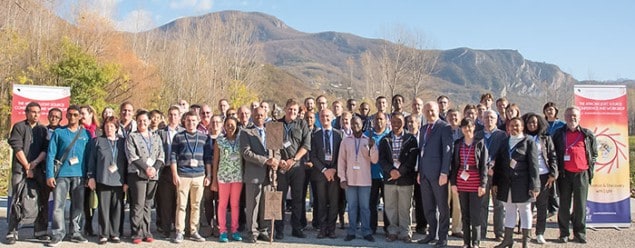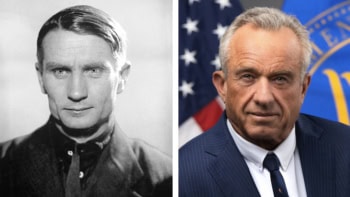Sekazi Mtingwa calls for physicists to get behind African plans to build the continent’s first ever light source

Light sources such as synchrotrons or free-electron lasers have been among the most transformative scientific instruments since the invention of traditional lasers and computers. They embrace almost all spectroscopy, scattering and imaging techniques, using radiation from the infrared to the X-ray and even soft gamma rays. They are also orders of magnitude brighter than traditional lasers. Though costly to build, light sources have resulted in thousands of published papers, provided graduate student training and driven technological innovation.
The extremely high photon flux that light sources provide has allowed big advances to be made in many applications, including drug development, data storage and – based upon the deciphering of protein, bacterial and viral structures – disease control. Light sources show tremendous promise in medical applications, allowing innovative imaging techniques of the heart, lungs, brain and breast, leading to exciting new diagnostic techniques and therapies. More recently, these facilities have been used in palaeontology and heritage studies to do, for example, 3D tomography of fossils, rocks and other artefacts.
There are currently 47 synchrotron-radiation research facilities based on electron-storage rings in 23 countries around the world that are either in operation, being built or in the planning phase. Almost all are in over-demand, which has led to the construction of additional facilities to serve an increasing worldwide user community. Most sources are national facilities, but two synchrotrons are truly international.
The 6 GeV, 850 m-circumference European Synchrotron Radiation Facility (ESRF) in Grenoble, which has been running since 1992, is a collaboration between 18 European nations, plus South Africa and Israel. Then there is the 2.5 GeV, 130 m-circumference Synchrotron-light for Experimental Science and Applications in the Middle East (SESAME) light source, which is being built near Amman, Jordan.
SESAME is a collaboration of nine Middle East countries – Bahrain, Cyprus, Egypt, Iran, Israel, Jordan, Pakistan, the Palestinian Authority and Turkey. Scheduled to start up in 2016, it is modelled closely on the CERN particle-physics lab and is being developed under the auspices of the United Nations Educational, Scientific and Cultural Organization (UNESCO), which became the umbrella organization for SESAME in May 2002.
Getting the ball rolling
There is, however, one habitable continent without any light source: Africa. Many scientists from African countries perform experiments at facilities in Europe and elsewhere, but their numbers are mostly limited by the cost of travelling to distant facilities. A light source in Africa would enable thousands of African scientists, engineers and students to gain access to a superb scientific and technological tool. Indeed, to be competitive socially, politically and economically, access to a nearby light source will be an absolute necessity.
To start the process towards an African Light Source (AfLS), the First African Light Source Conference and Workshop was held at the ESRF in Grenoble in November 2015 (see above). Organized by Simon Connell of the University of Johannesburg and colleagues, it focused on research performed at light sources around the world that is relevant to Africa. Delegates also discussed the vital issue of whether it is feasible to build the AfLS in Africa modelled on the SESAME project.
The conference elected a steering committee and adopted the “Grenoble Resolutions”, which include stating that for African countries to “take control of their destinies” and become major players in the international community, “a light source must begin construction somewhere on the African continent in the near future, which will promote peace and collaborations among African nations and the wider global community”. The resolution also asserts that the AfLS is expected to contribute significantly to enhancing university education; training a new generation of researchers; aiding African industry; and advancing research that addresses issues, challenges and concerns relevant to Africa.
Participants also adopted a roadmap consisting of short-, medium- and long-term goals. These start with building awareness of the benefits of light sources, enhancing education, establishing international collaborations and developing African infrastructures that support research at light sources. The goals end with the construction of an AfLS, perhaps under the auspices of a UNESCO-type organization.
We envision that the conference in Grenoble will be the first in a series with most future events to be held in Africa. The global physics community should take advantage of these opportunities to provide its moral and financial support to realize the dream of Africa’s first ever light source.



